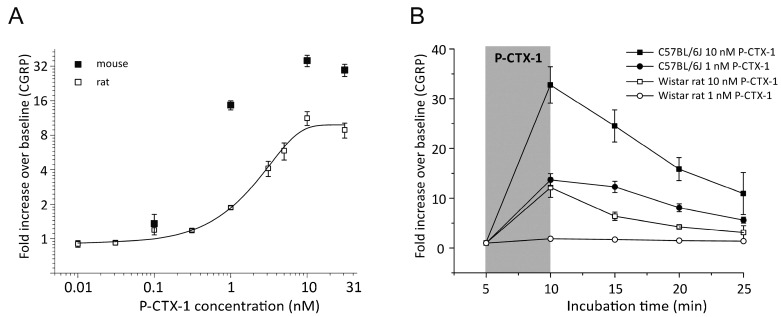Figure 1.
CGRP-release by P-CTX-1 is more effective in mouse than in rat skin. (A) Increasing concentrations of P-CTX-1 augmented the iCGRP release dose-dependently in rat and mouse hindpaw skin. The diagram illustrates fold increase of CGRP as compared to baseline. Error bars represent ± SEM; n = 4–18 (see text). A Boltzmann sigmoidal model was calculated and yielded ~4 fold increase over baseline at the EC50 of 2.7 nM in rat. In the mouse, P-CTX-1 was more effective. The EC50 yielded ~13 fold increase of iCGRP. In the rat, 0.31 nM was the effective threshold concentration with iCGRP release being significantly elevated above baseline (p = 0.008, t-test). (B) Release of iCGRP following exposure of rat or mouse hindpaw skin with P-CTX-1 at 1 or 10 nM. Stimulation in mouse tissue was more effective and iCGRP release remained high in the incubation steps after P-CTX-1 was removed. Data are measured as pg/mL and expressed as fold increase over baseline. Note that the rat concentration response function of panel A uses some of the data displayed in Figure 1G of [8].

